Kaze and the Wild Masks is a retro platformer about an adventurous rabbit who accidentally unleashes a calamity upon her homeland. While exploring a ruin, Kaze discovers a magical ring. Her delight turns to swift horror when her companion Hogo is pulled into the ring’s jewel by spectral hands. Those same hands also release Typhoon, a wicked sorceress who had been imprisoned within the jewel. Typhoon proceeds to terrorize the flying islands that make up Kaze’s homeland by transforming the people’s vegetable foodstuffs into rampaging monsters. Protected by a magical shield that Hogo’s spirit generates from within his prison, Kaze sets out to conquer platforming challenges to defeat the vegetable monsters, stop Typhoon’s vengeful rampage, and free Hogo from the jewel.
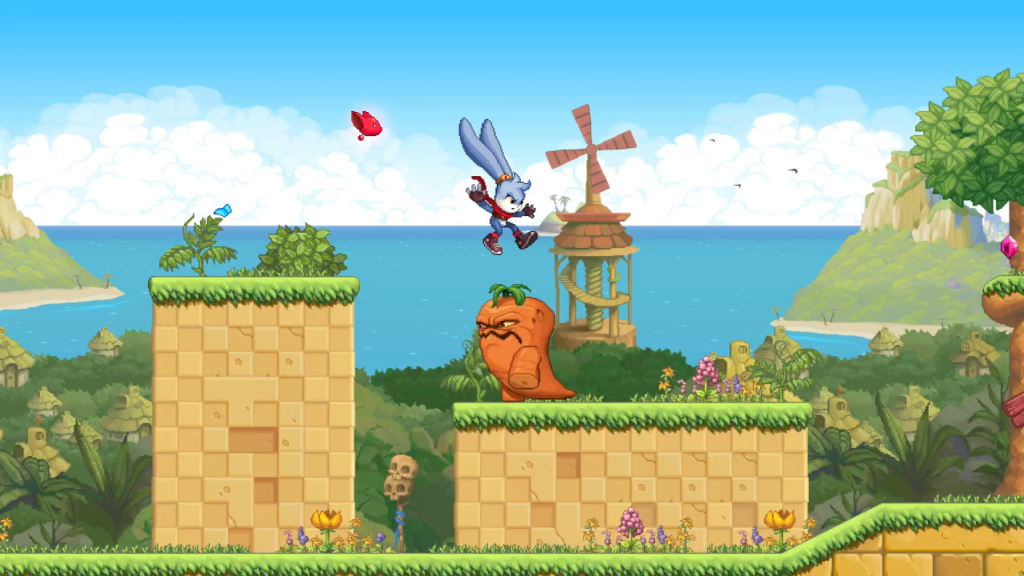
The first thing I notice about Kaze and the Wild Masks is its striking graphics. I initially suspect everything is drawn by hand, building off the simple animations that introduce each of the four flying islands. Upon closer examination I recognize the pixels that make up Kaze, her enemies, and the environment. These pixels are so dense and so minute they become almost indistinguishable on smaller displays, a testament to the effort and care put into their creation.
Enemy designs are especially impressive, having a threatening appearance while still recognizable as a monstrously enchanted fruit or vegetable. Ears of corn become snarling beasts that crawl back and forth along platforms, snapping at Kaze with razor teeth. Tomatoes gain the power to fly, though Kaze can defeat them by jumping on their tops—except the ones wearing leafy helmets, whose eyes glare suspiciously at Kaze as she bounces off their protected heads. Kaze herself is wonderfully designed, her ears drifting behind her as she runs through levels. If I stand idle, she frowns at the screen with an impatient smirk that would make Sonic the Hedgehog proud.
Combining a mastery of the pixel canvas with detailed character designs and wonderful animations, Kaze and the Wild Masks is worth playing just to marvel at its graphics.
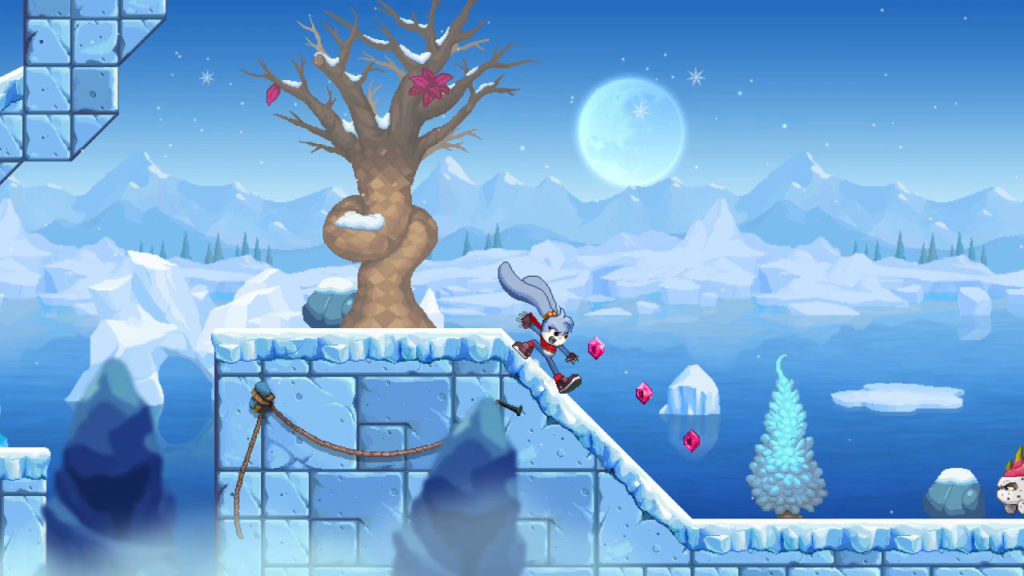
A gorgeous art style isn’t the only reason to play Kaze and the Wild Mask. It’s a great platformer too. Its elegant design utilizes only the directional pad and two buttons for all its commands. If it wanted to, it could be played with a humble NES controller. One button jumps, while the other activates spinning abilities. On the ground, Kaze can spin to propel herself forward in a lunging attack. In the air, she spins her ears like helicopter blades, slowing her fall and carrying her longer distances.
Utilizing these simple core abilities, I guide Kaze across more than twenty-seven levels. The basic goal in each level is simple: Help Kaze reach the goal at the level’s end. Yet there are other activities to accomplish along the way.
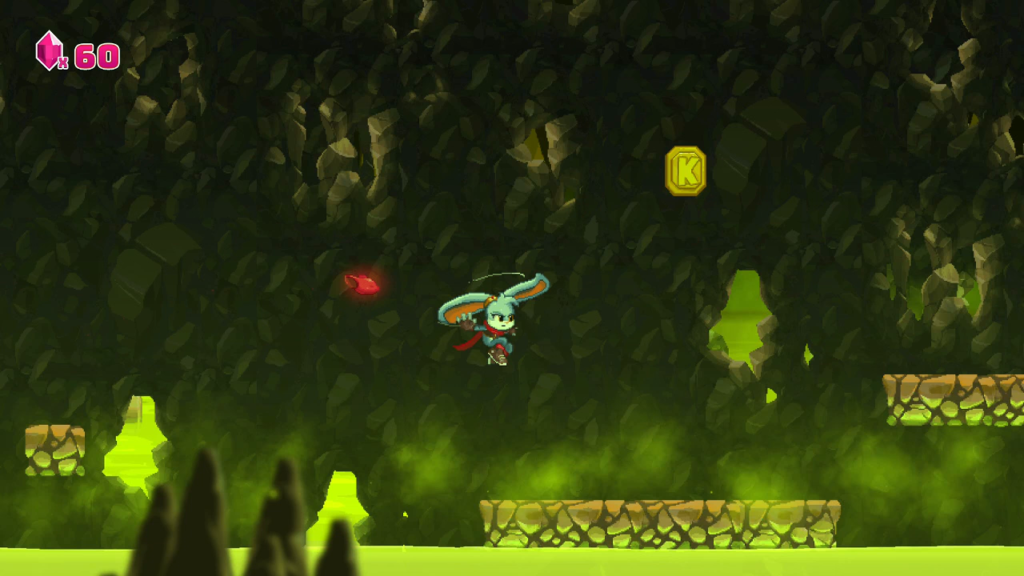
The first additional goal in each level is to find four medals inscribed with the letters that spell Kaze’s name. These are typically, though not always, in plain sight, and I am able to help Kaze claim all of them on her first visit to every level without much effort. Each level is also strewn with fragments of a purple gem. If Kaze can gather one hundred of these fragments and deliver them to the goal, she earns a purple medal.
Most challenging are the bonus stages. In every level there are two shattered crystals. If I carefully examine the scenery while I guide Kaze through the levels, I can spot fragments of these crystals hidden either just offscreen or sequestered behind a piece of foreground scenery. Touching these crystals transports Kaze to a platforming challenge. Finding and completing both challenges in a level earns Kaze a green medal.
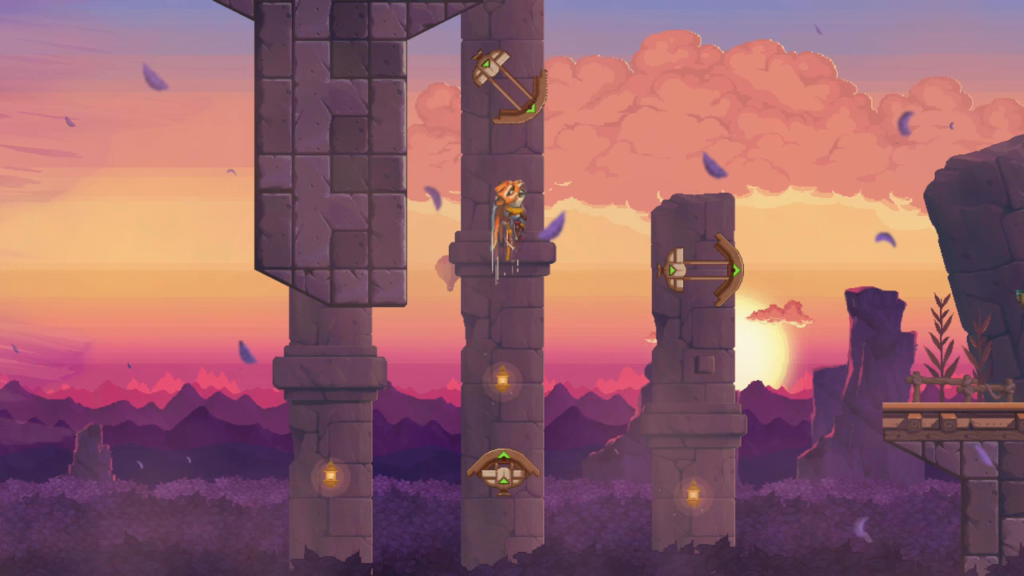
If these objectives sound like they’re pulled directly from the most recent Donkey Kong Country entries, that’s because they are. Kaze and the Wild Masks is a fearless imitator of that series, making mostly aesthetic changes while leaving Donkey Kong Country’s signature level design untouched. Many levels are filled with bottomless pits which I must help Kaze traverse by navigating between ropes and bouncing along strings of enemy heads. Instead of barrel cannons, Kaze throws herself with giant slingshots, many of which require split-second timing. Even Kaze’s hovering ability recalls Dixie Kong’s hair-twirling antics.
I am constantly reminded of Donkey Kong Country while playing Kaze and the Wild Masks, though not once do I feel like I am playing a lesser version. Its design execution is strong enough to stand on its own.
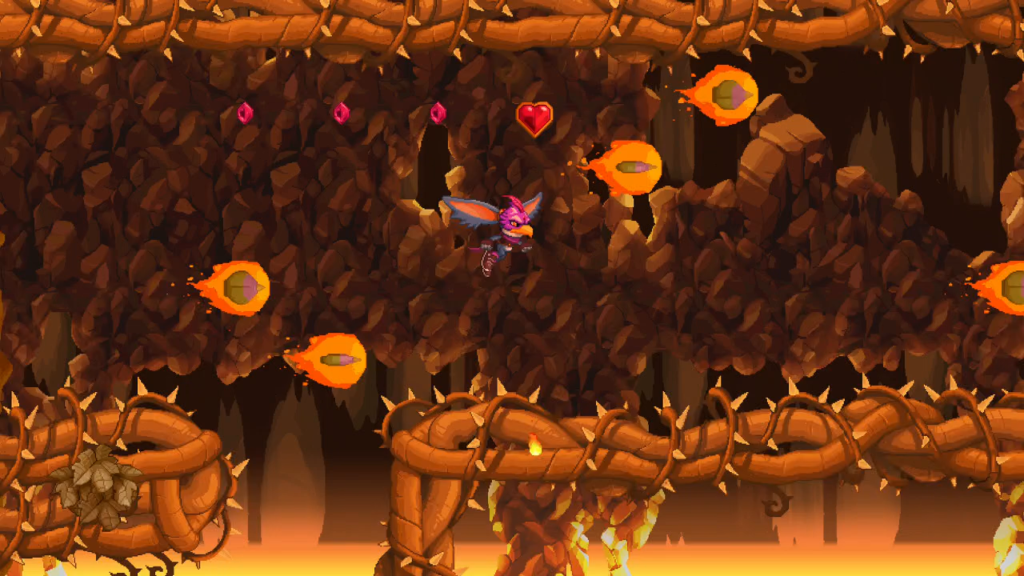
A unique flourish added to some levels are the Wild Masks, enchanted artifacts that grant Kaze the abilities of another animal for the remainder of a level. A Tiger mask lets her pounce forward through enemies, even in midair, and clamber up walls with her sharp claws. A Shark mask lets her swim underwater, including a charging ability that can be used to leap up from the water’s surface to claim treasures floating in the air. An Eagle mask lets Kaze fly when I rhythmically tap the jump button and fire arcing energy bullets from her beak. These transformation masks are predictable in their choices and the abilities they confer, though used sparingly enough to make them a welcome change to standard platforming.
It’s the Lizard Mask whose function is entirely unexpected. Instead of transforming Kaze into a wall-crawling fly-muncher, it fills her legs with the uncontrollable need to run. For the remainder of the level, Kaze becomes a careening locomotive, jumping between platforms and diving between enemies with limitless momentum. If you are now telling yourself this sounds like Donkey Kong Country’s mine cart levels, then you’re absolutely correct.
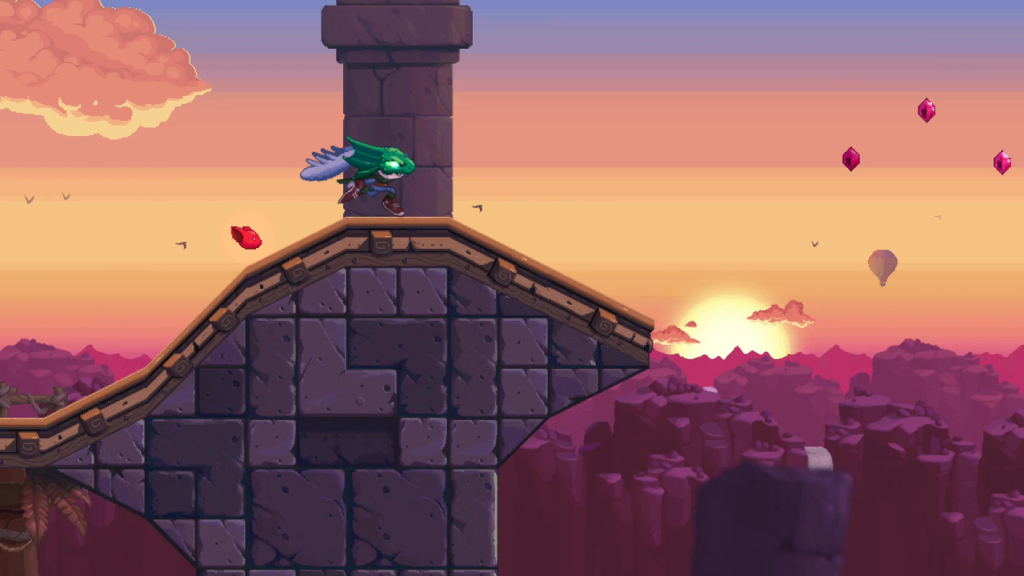
Lizard Mask levels are among Kaze and the Wild Masks’ most difficult, but the videogame as a whole provides plenty of challenge for the seasoned platformer player. For those who find the default difficulty too strenuous, there is an optional “Casual” difficulty that gives more charges to Hogo’s protective shield and more checkpoints for Kaze to fall back to when she dies. For true platforming masters who may find even the default difficulty too relaxed, there are also Time Trial and No Damage medals to earn on every level.
Kaze and the Wild Masks is a complete package: beautiful graphics, excellent platforming mechanics, and satisfactory challenge. It even clocks in at an admirable length; it took me just over five hours to finish every level and gather every medal, not counting the Time Trial and No Damage medals. In a world filled with too-long sandboxes and RPGs, I appreciate brevity. The only complaint I may feel inclined to hurl is it may draw a few too many cues from Donkey Kong Country. But I don’t feel inclined. It feels more like homage than derivation, and when it’s this well executed, I feel no need to complain at all.